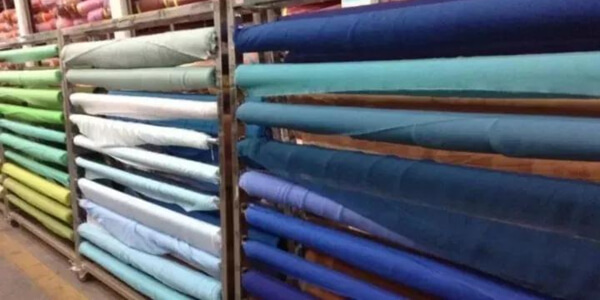
أهمية ترك القماش يرتاح قبل التقطيع: نصائح للتعامل الصحيح مع النسيج
I. مقدمة
أ. شرح لماذا يحتاج القماش إلى الراحة قبل القطع
يعد التعامل مع القماش بشكل صحيح أمرًا ضروريًا لتحقيق منتج نهائي ذو مظهر احترافي عند إنشاء ثوب أو أي مشروع آخر قائم على القماش. أحد الجوانب الرئيسية للتعامل مع القماش غالبًا ما يتم التغاضي عنه هو الحاجة إلى راحة النسيج قبل القطع. غالبًا ما يتم لف القماش بإحكام على البراغي أو البكرات ، مما قد يسبب توترًا وتشويهًا في الألياف. السماح للنسيج بالراحة قبل القطع يسمح للألياف بالاسترخاء والاستقرار ، مما ينتج عنه قياسات أكثر دقة واتساقًا ومنتج نهائي أكثر ثباتًا. سوف تستكشف هذه المقالة أهمية ترك القماش يرتاح قبل القص ويقدم نصائح للتعامل مع القماش وإعداده بشكل صحيح للقطع.
ثانيًا. تحضير النسيج للقطع
أ. فهم خصائص النسيج
قبل قطع أي نسيج ، من المهم فهم خصائصه. سيكون للأقمشة المختلفة خصائص مختلفة ، مثل التمدد والوزن والستائر ، والتي يمكن أن تؤثر على كيفية التعامل معها وقطعها.
ب. تحديد الجانب الصحيح والخطأ للنسيج
العديد من الأقمشة لها جانب صحيح وخاطئ ، مما قد يؤثر على مظهر وأداء المنتج النهائي. يمكن أن يساعد تحديد الجوانب الصحيحة والخاطئة قبل القطع في ضمان استخدام القماش في الاتجاه المطلوب.
ج. التحقق من اتجاه قيلولة النسيج
تحتوي بعض الأقمشة ، مثل المخمل أو سروال قصير ، على غفوة أو كومة اتجاهية يمكن أن تؤثر على مظهر النسيج وملمسه. يمكن أن يضمن التحقق من اتجاه الغفوة والتأكد من قطع جميع القطع في نفس الاتجاه مظهرًا ثابتًا.
د- التأكد من أن القماش مسطح وخالي من التجاعيد
للحصول على قياسات وخفض دقيقة ، من المهم ضمان أن يكون النسيج مسطحًا وخاليًا من التجاعيد أو التجاعيد. يمكن أن يساعد الكي أو تبخير النسيج قبل القطع على تحقيق سطح ناعم.
E. محاذاة selvages النسيج
حواف حواف القماش هي الحواف النهائية التي تعمل بالتوازي مع طول القماش. يمكن أن تساعد محاذاة هذه الحواف قبل القطع في ضمان استقامة القماش ومربعه.
F. نهايات النسيج المتداخلة لقطع أطول
بالنسبة لقطع القماش الأطول ، قد يكون من الضروري تداخل الأطراف للحصول على الطول المطلوب. يمكن أن يساعد القياس الدقيق والتداخل في ضمان منتج نهائي سلس وسلس.
ثالثا. السماح للنسيج بالراحة
أ. كم من الوقت للسماح للنسيج بالراحة
بعد تحضير النسيج للقطع ، من المهم السماح له بالراحة لبعض الوقت قبل قطعه. وذلك لأن النسيج يمكن أن يكون تحت التوتر من عملية التصنيع ، والسماح له بالراحة يمكن أن يساعد في منعه من التمدد أو التزييف بعد قطعه. يمكن أن يختلف طول المدة الزمنية للسماح للنسيج باختلاف نوع النسيج والرطوبة ودرجة حرارة البيئة ، ولكن التوصية الشائعة هي السماح لها بالراحة لمدة 24 ساعة على الأقل.
ب. التخزين المناسب للنسيج أثناء استرخاءه
بينما يستريح النسيج ، من المهم تخزينه بشكل صحيح لمنعه من التعرض للتجاعيد أو التجاعيد أو التالفة. من الناحية المثالية ، يجب أن يتم لف النسيج على أنبوب من الورق المقوى أو مطوية بدقة وتخزينها في مكان بارد وجاف بعيدًا عن أشعة الشمس المباشرة. من المهم أيضًا تجنب تكديس الأشياء الثقيلة فوق النسيج ، مما قد يتسبب في تشويهه أو امتداده. يساعد العناية المناسبة بالنسيج خلال فترة الراحة في ضمان أن يكون في أفضل حالة ممكنة للقطع والخياطة.
رابعا. خاتمة
يعد معالجة الأقمشة المناسبة ضرورية لتحقيق قياسات دقيقة ، ومنع التزييف أو تقلص ، وإنشاء منتج نهائي ذو مظهر احترافي. عند إعداد النسيج الخاص بك للقطع ، من المهم فهم خصائصه ، وتحديد جانبه الصحيح والخطأ ، والتحقق من اتجاه القيلولة ، والتأكد من أنه مسطح وخالي من التجاعيد ، ومحاذاة selvages ، وينتهي النسيج المتداخل للقطع الطويلة. إن السماح للنسيج بالراحة لمدة 24 ساعة على الأقل قبل القطع أمر بالغ الأهمية. يساعد في تثبيت النسيج ومنع التمدد أو التشويه أثناء القطع والخياطة.
في الختام ، يعد إعطاء الوقت للوقت للراحة قبل القطع أمرًا ضروريًا في إنشاء ملابس عالية الجودة وملائمة جيدًا وغيرها من العناصر المخيط. من خلال إعداد النسيج الخاص بك بشكل صحيح والتعامل معه بعناية ، يمكنك المساعدة في ضمان أن منتجك النهائي يبدو احترافيًا ويستمر لسنوات. لذلك ، سواء كنت خياطًا محنكًا أو مبتدئًا ، فامنح نسيجك الوقت والاهتمام الذي يستحقه ، وستكافأ بإبداعات جميلة مصنوعة جيدًا.
